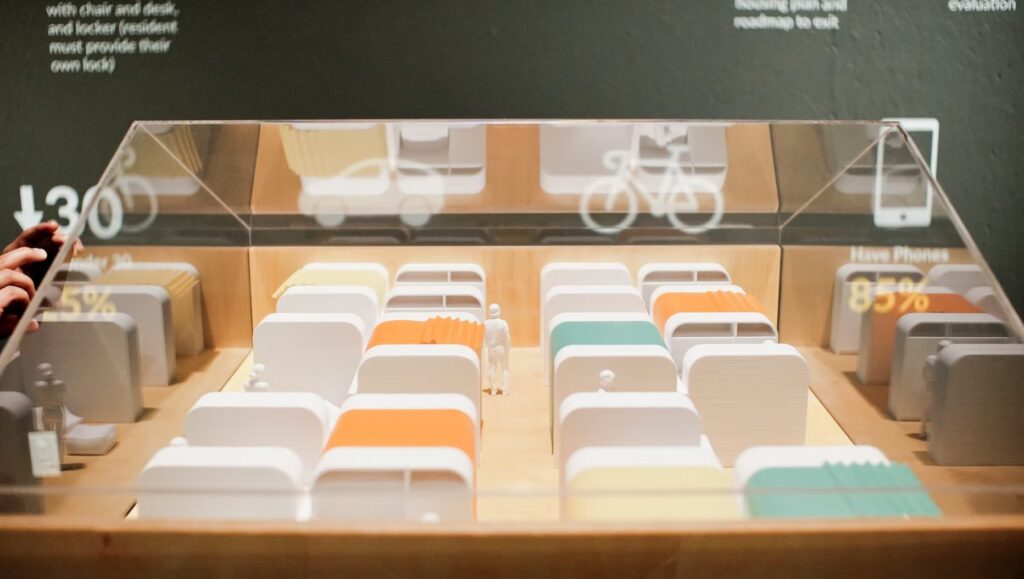

DOME is a modular, unitized system specifically designed for interim and emergency housing. It combines all the essential furnishings commonly found in these facilities into a single unit. A DOME includes a bed with room for storage underneath, a lockable wardrobe, privacy partitions, and an outlet. An optional fabric canopy can be added for additional privacy. Each unit accommodates wheelchair access and maneuverability and has room for a medium-sized kennel for a 30-pound pet.
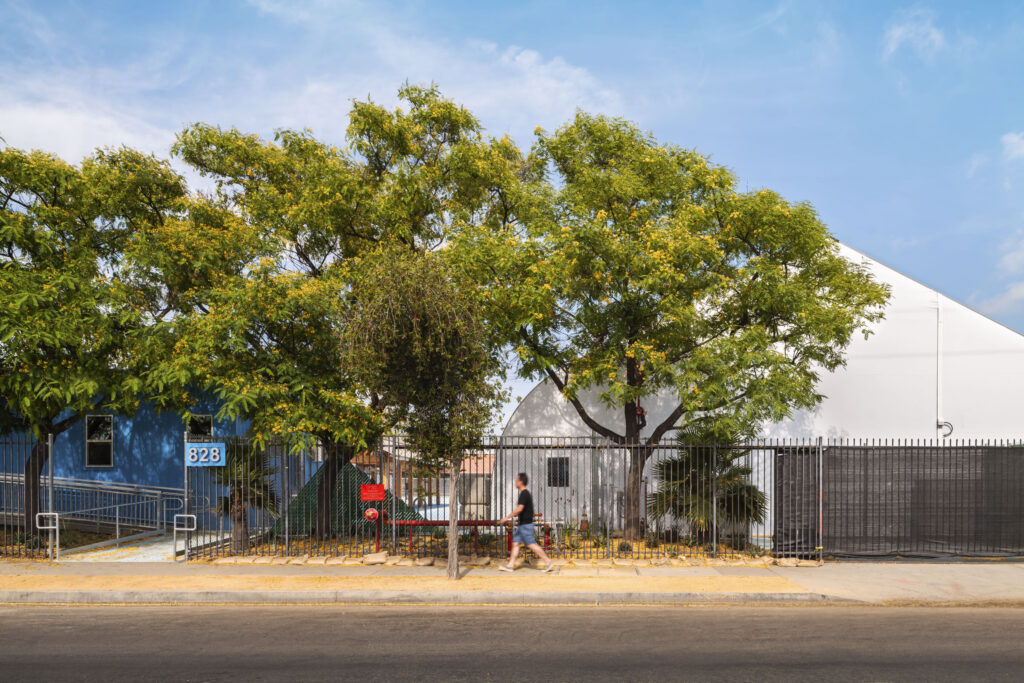
In 2020 Perkins&Willl was selected to assist the Los Angeles Bureau of Engineering with creating 1500 interim housing beds across the city. Using a kit-of-parts approach, our task was to plan out the selected sites to accommodate a large membrane structure and a series of purpose built trailers that served as restrooms, counseling and administrative offices.
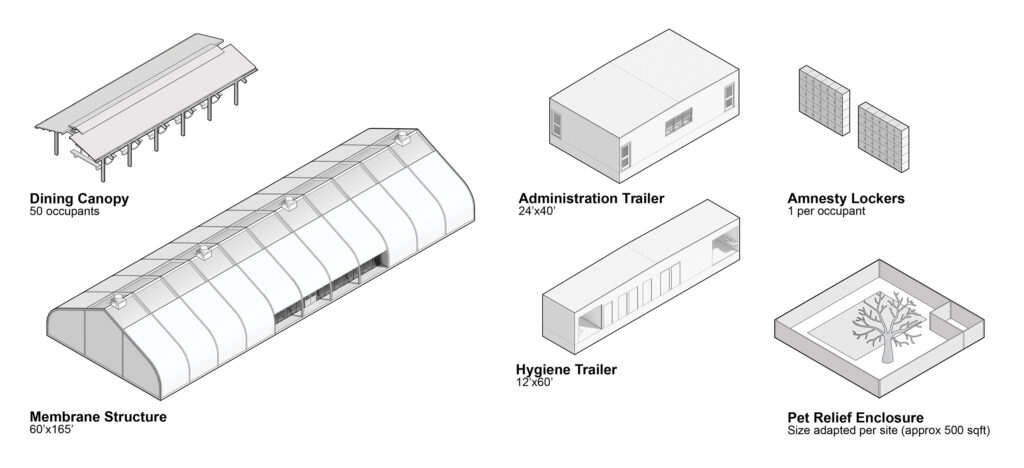
As we searched for furniture for the sleeping area, we began to visit interim housing facilities throughout the Los Angeles area to see how this was typically handled. We found that there was a general lack of available products and furniture systems designed for congregate shelters and because of this, no two of facilities were alike. Each organization was dealing with their challenges in their own way, usually piecing together reproposed items that lacked the durability needed for transitional housing. Some sleeping areas lacked privacy or flexibility while others lacked personal storage.
Beds in interim housing are only intended to serve as a temporary place of shelter. However, a lack of available housing has extending the typical stay for “clients” (this is how staff refer to temporary residents) from 1 month to 6 months and in some cases, up to 1 year.
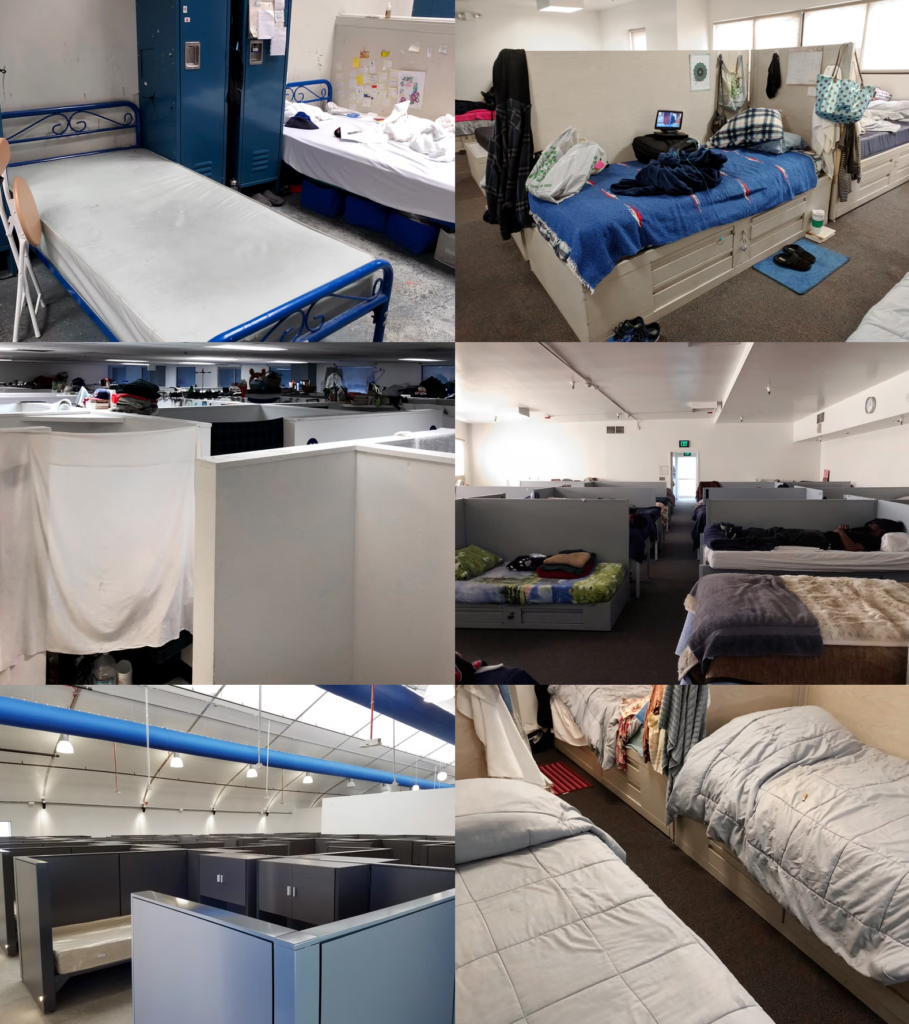
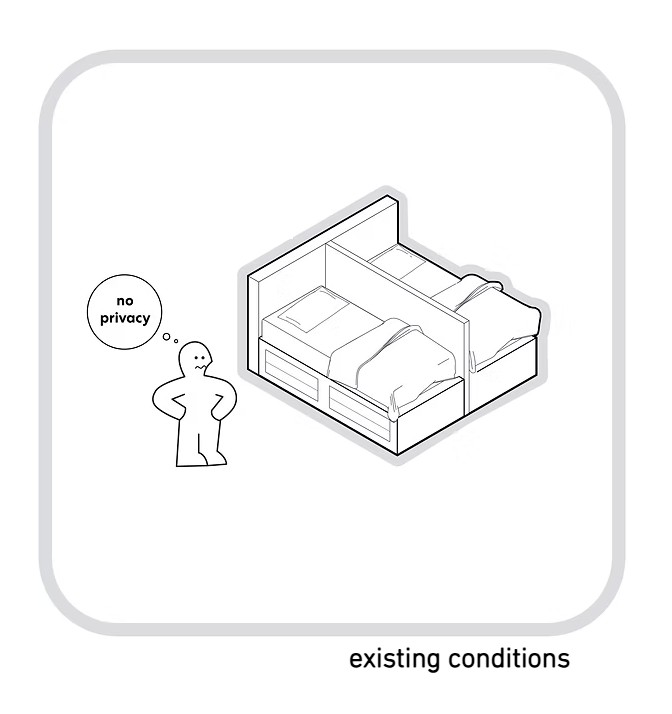
Funded by an internal Perkins&Will innovation grant, we decided to further our research and attempt to develop a series of products tailored to A Bridge Home and other interim housing operators. In our continued conversations with staff and clients, a clear polemic between the desire for greater privacy and a need for greater security emerged. Some felt that giving their clients greater privacy resulted in far fewer altercations while others prioritized the ability to see across the room in order to quickly spot and resolve issues.
Our goal was to create better options for the housing organizations we had come to know so we reached out to a few major systems furniture manufacturers that could deliver products at scale. As we developed the concept and began to whittle it down to its simplest form, a kind of wardrobe cabinet emerged. We started to experiment with the idea of a fabric component as well which could be removed to preserve site lines if that was the operator’s preference. The concept evolved into what could be described as hybrid steamer trunk / dome tent. We called our idea DOME in reference to an article in the LA Times which discussed how the simple dome tent has made a positive impact on many of LA’s homeless.
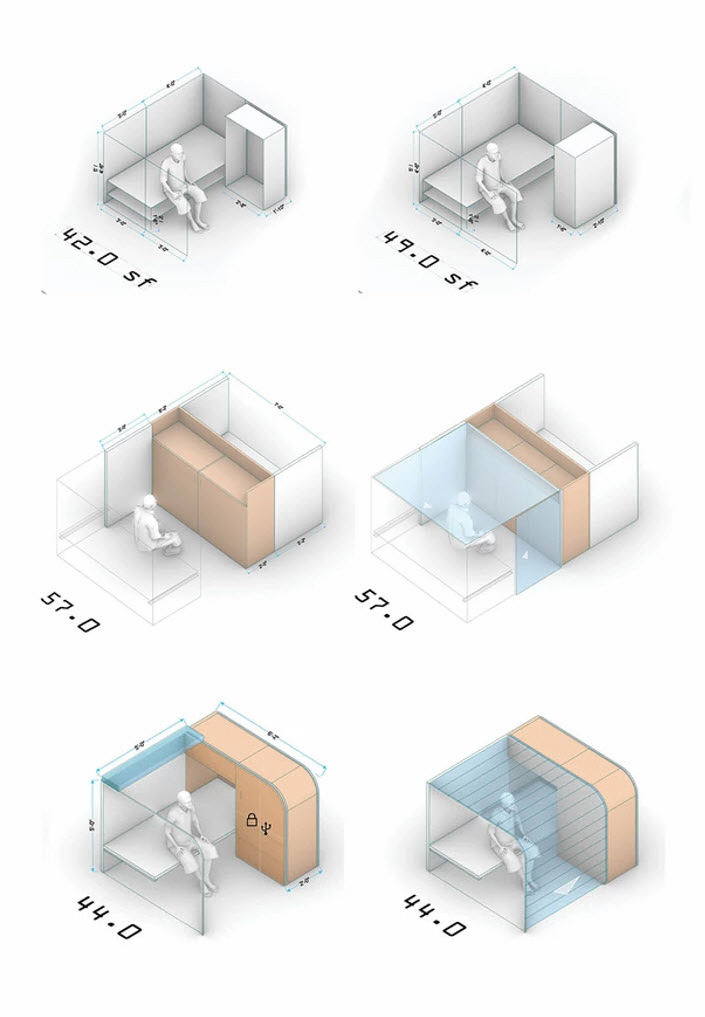
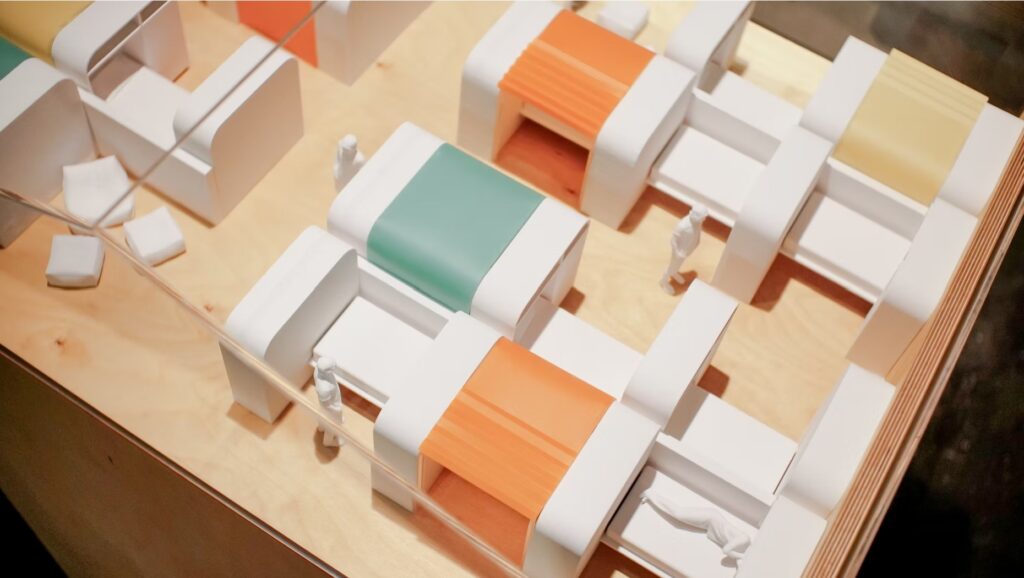

Through a series of studies and prototypes we arrived at a design solution that was more like a piece of casework than the systems furniture we had imagined when we started the project. To build our full scale prototype, we reached out to Shield, a Kansas City based manufacturer that specializes in solid surface medical casework and lockers for professional sports venues. The easy maintenance and durability of their products was a good fit, and we were happy to move to a material that felt more residential than the metal cabinets often found in interim housing.
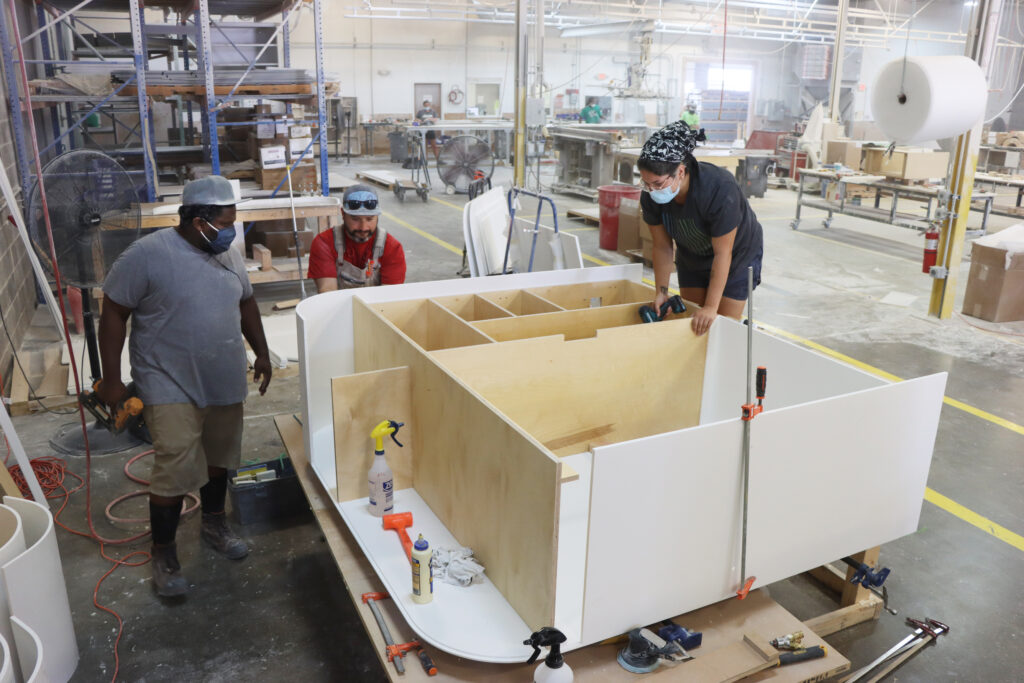
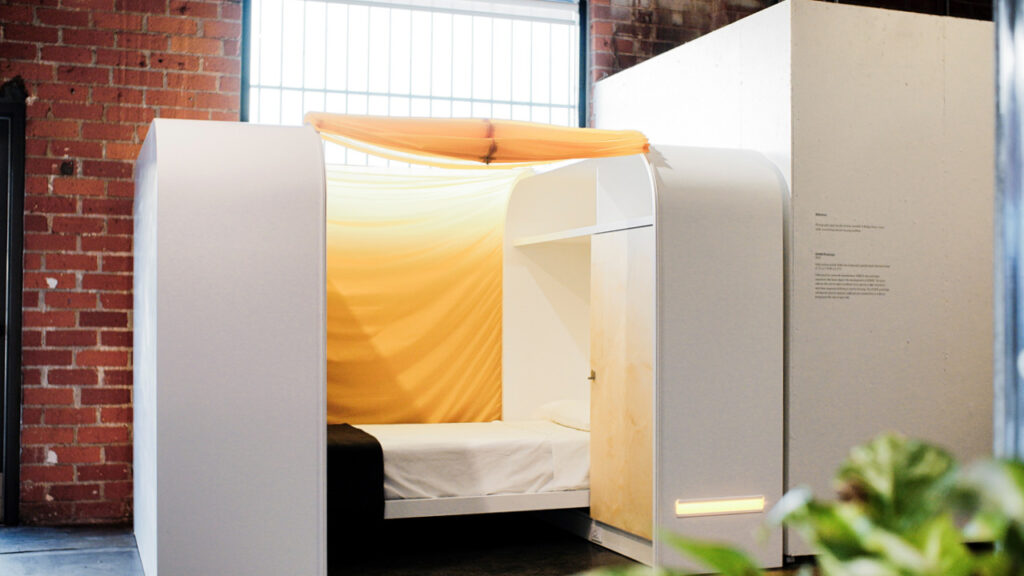
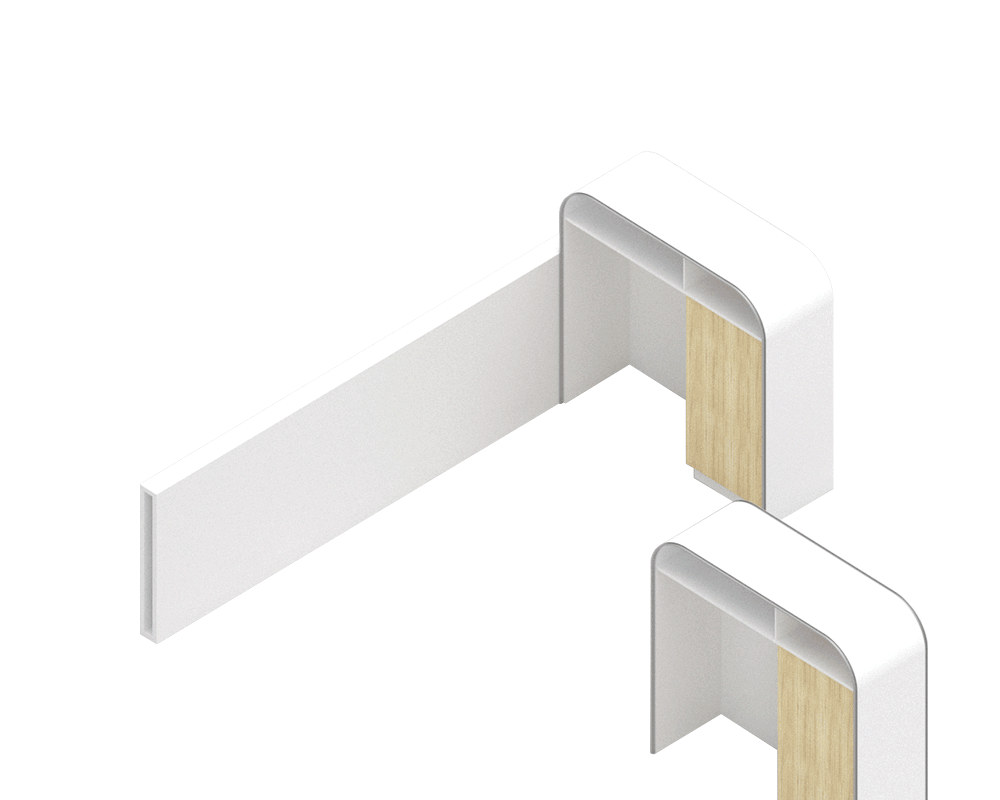
Layout
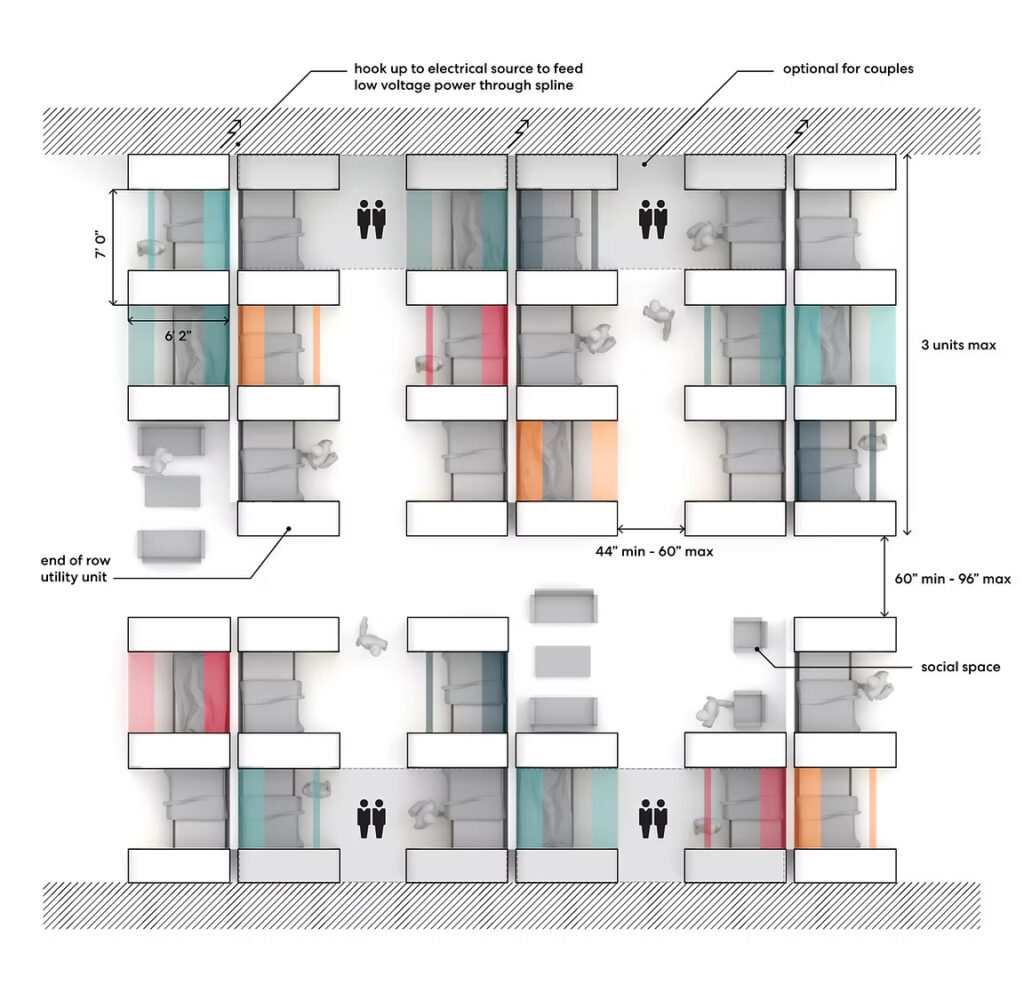
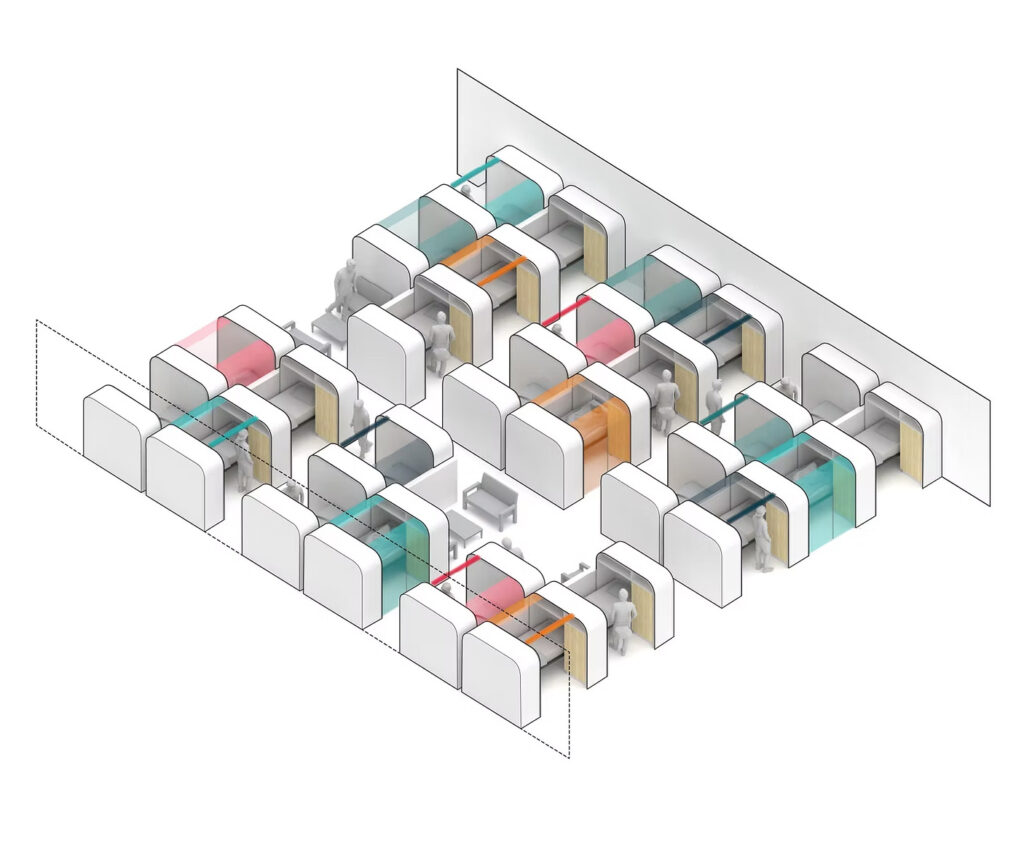
Assembly
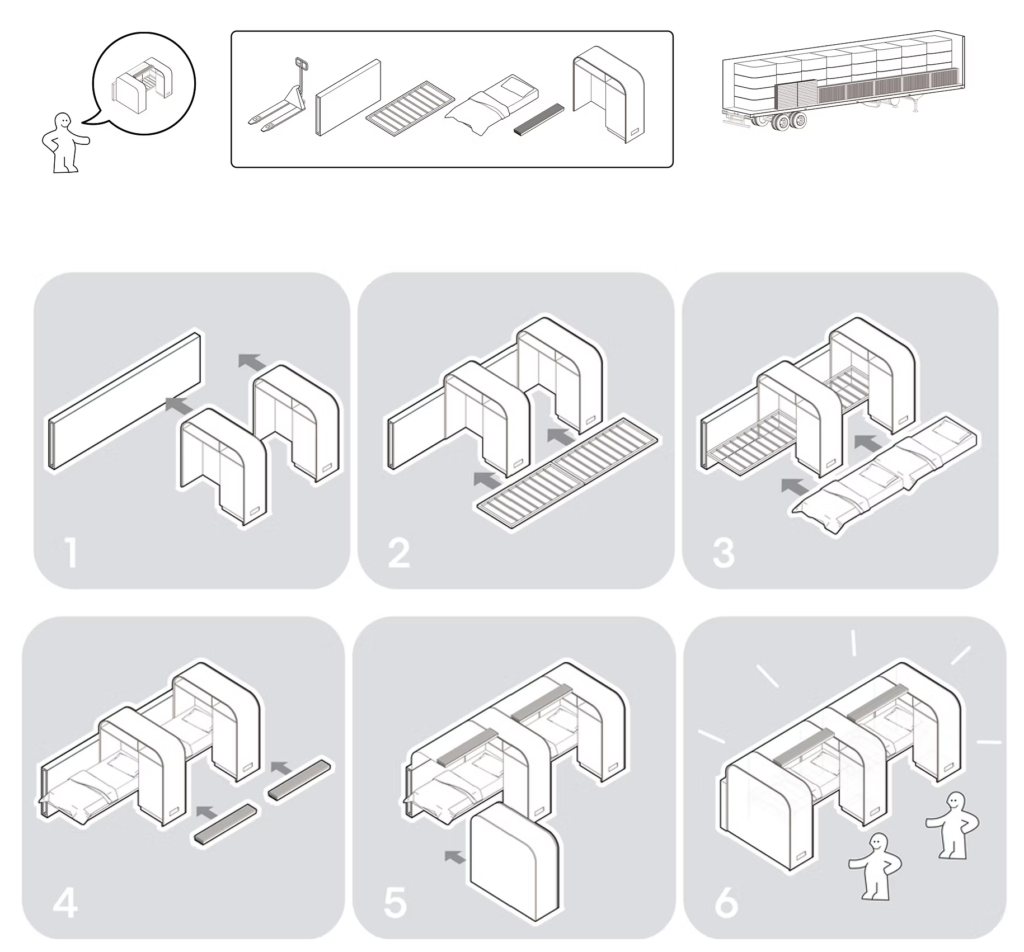
We tried to get Ikea to make DOME. We even made assembly instructions for them, but they did not respond. :_(
Materials and Lighting
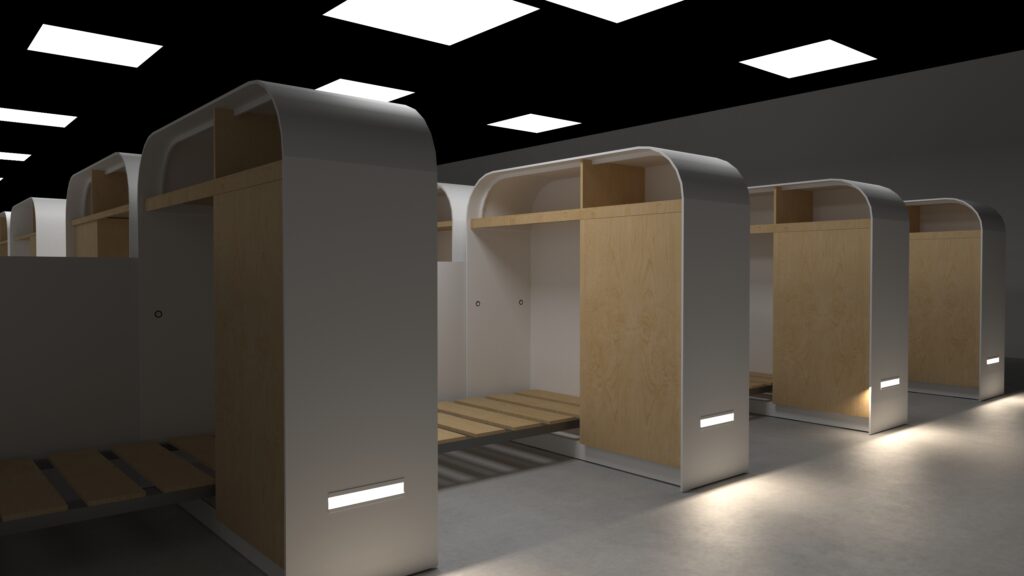
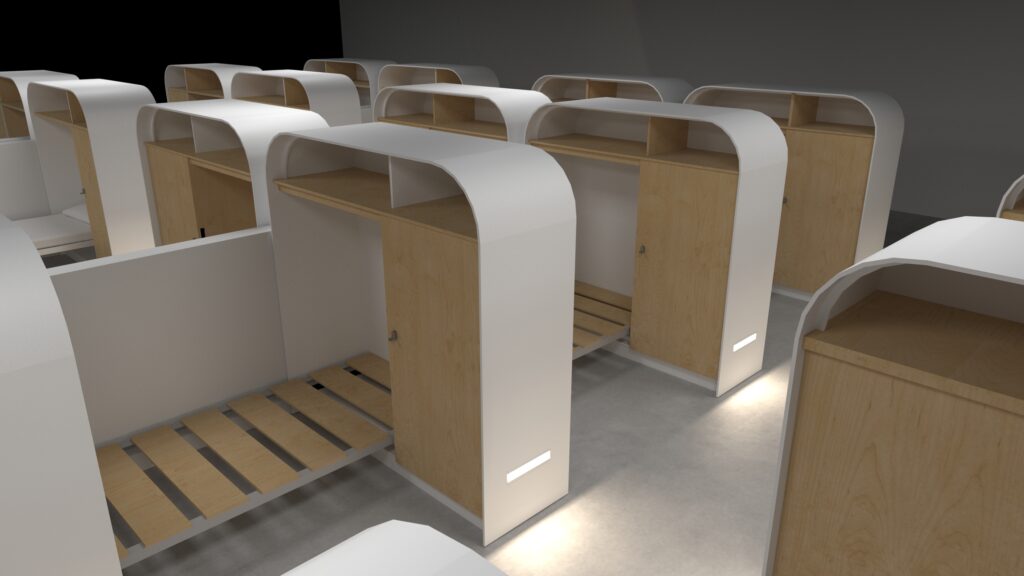
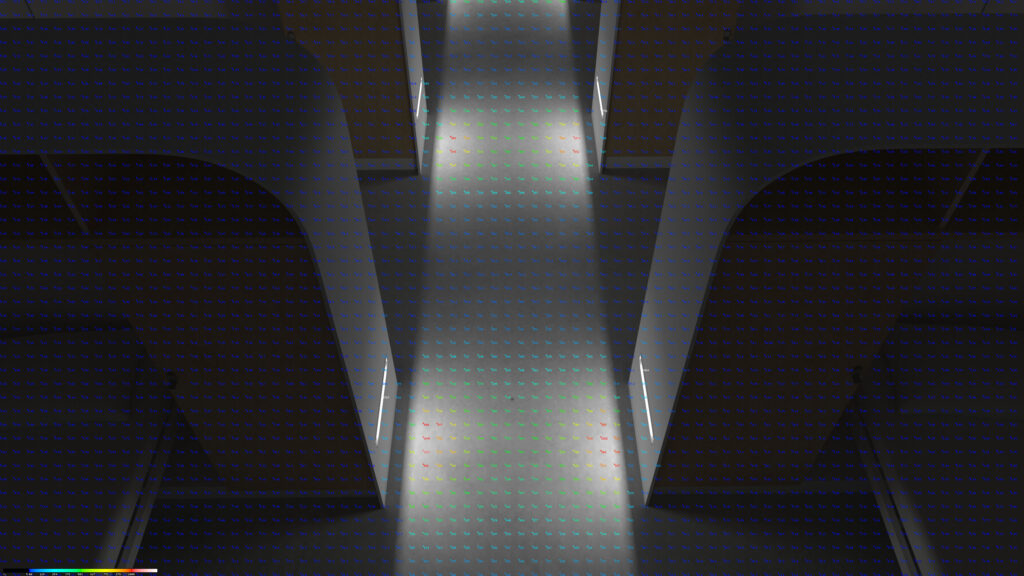
Emergency egress isle lighting is provided by an integrated step light so that overhead lighting can be reduced or completely turned off at night.
Fabrication
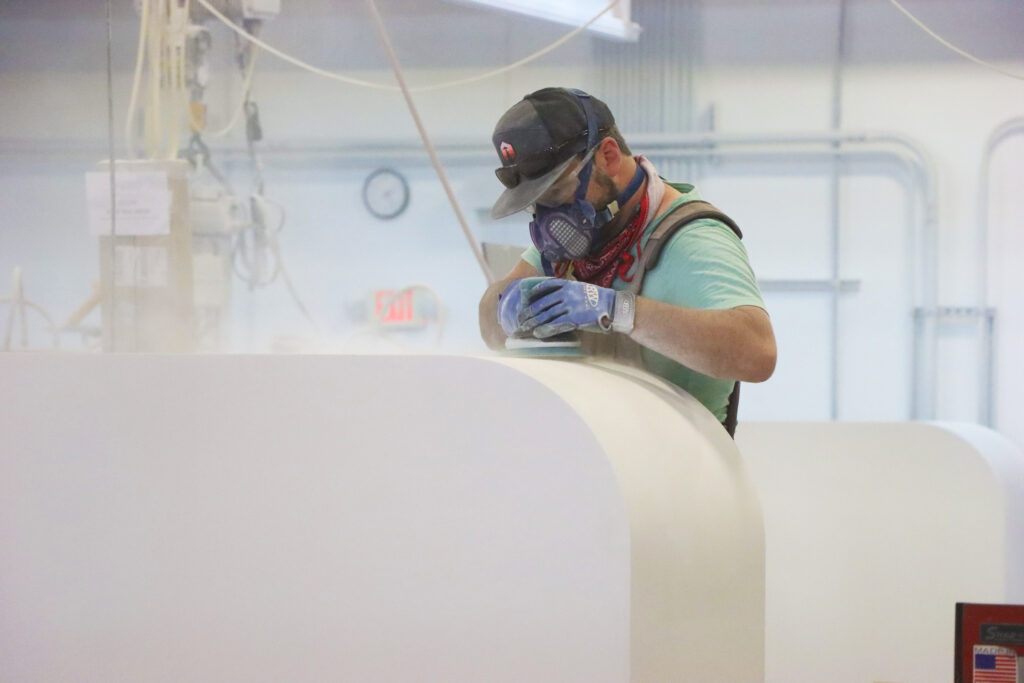
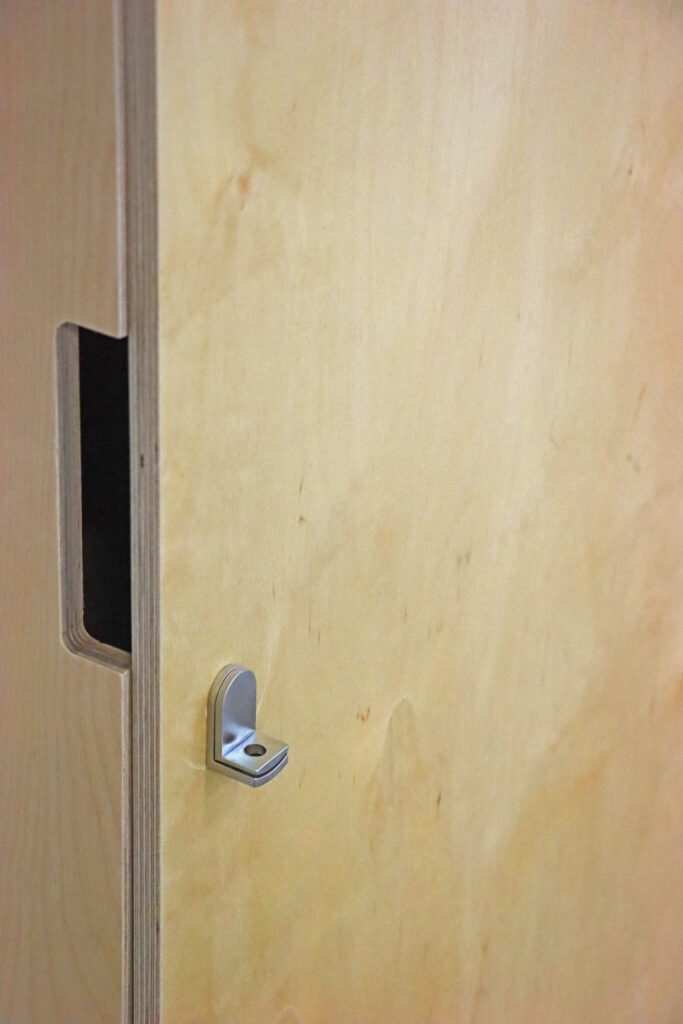
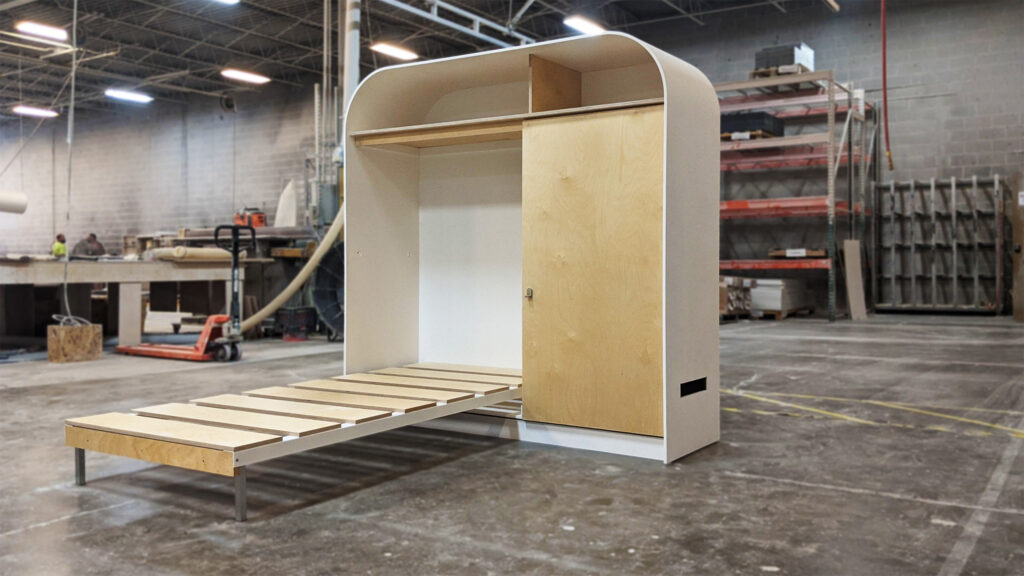
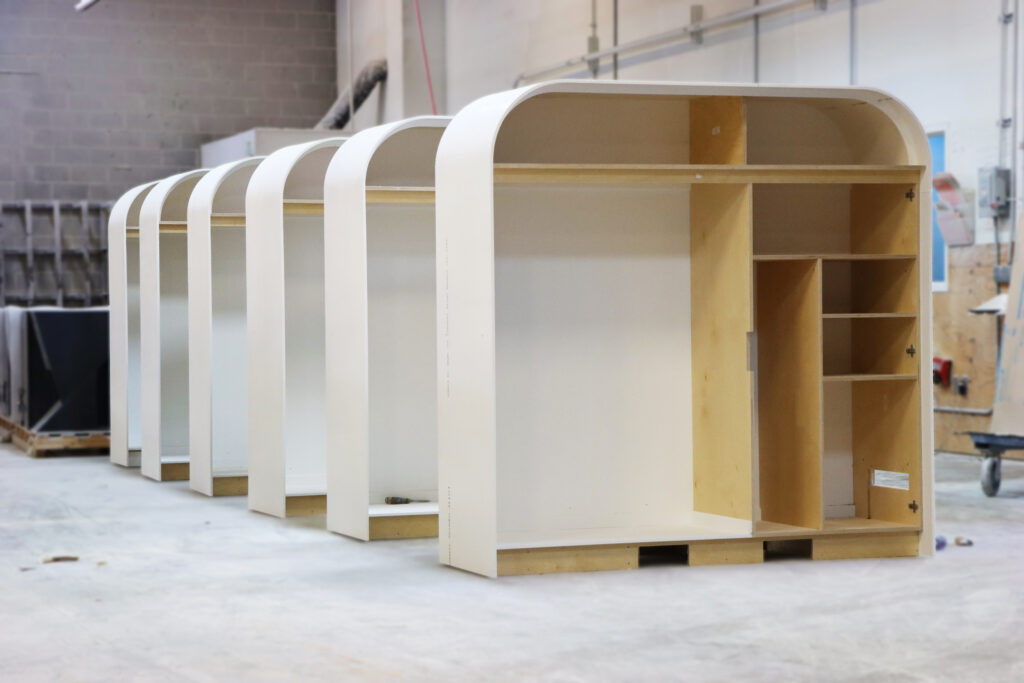
The outer shell of DOME is constructed out of Solid Surface panels. The interior shelving and cabinet door is built from Birch Plywood.
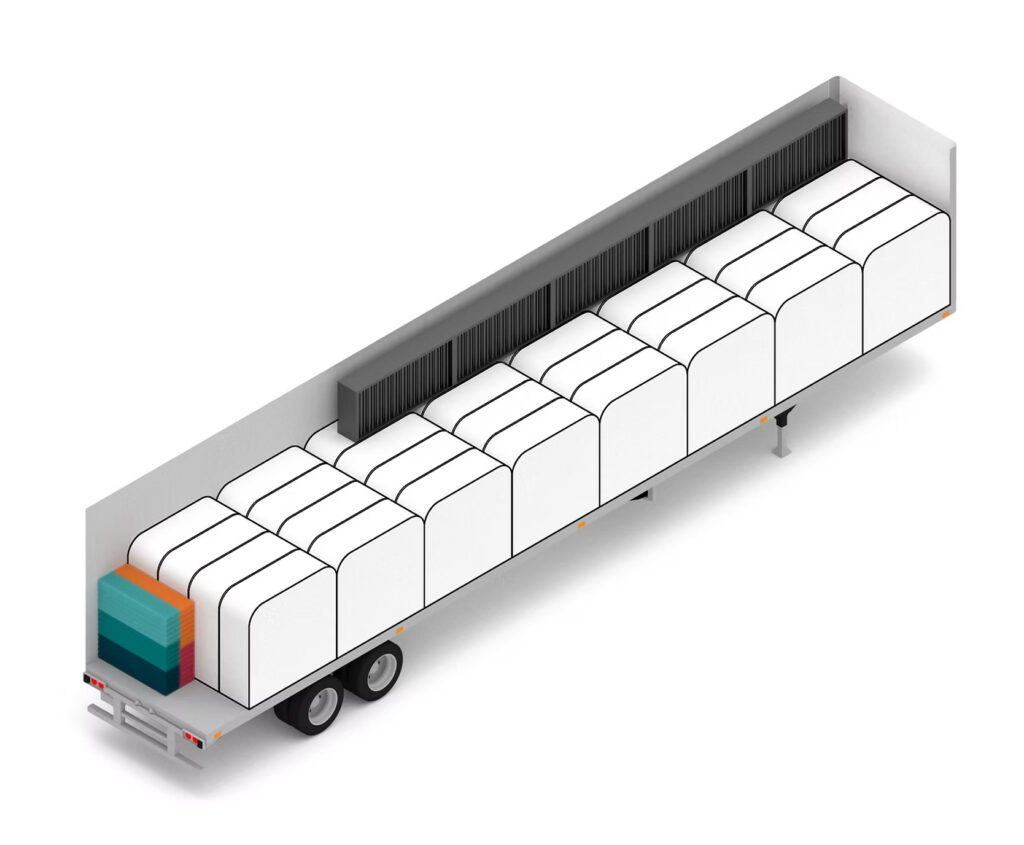
32 DOME units can fit on a 53′ long trailer.
Installation

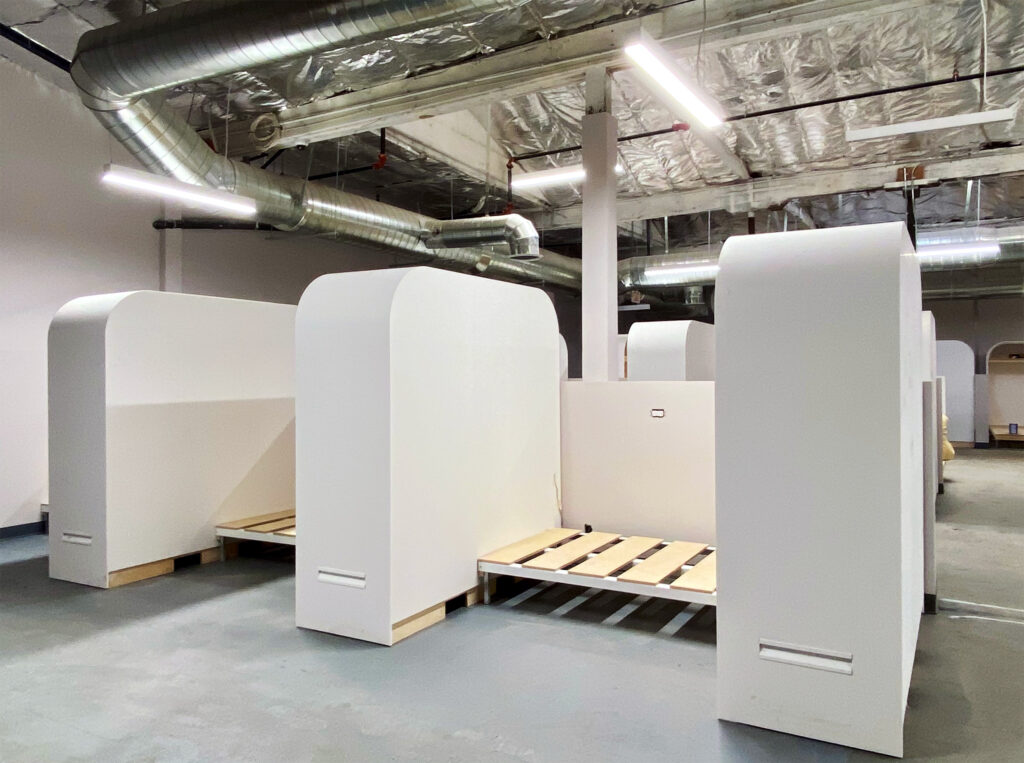
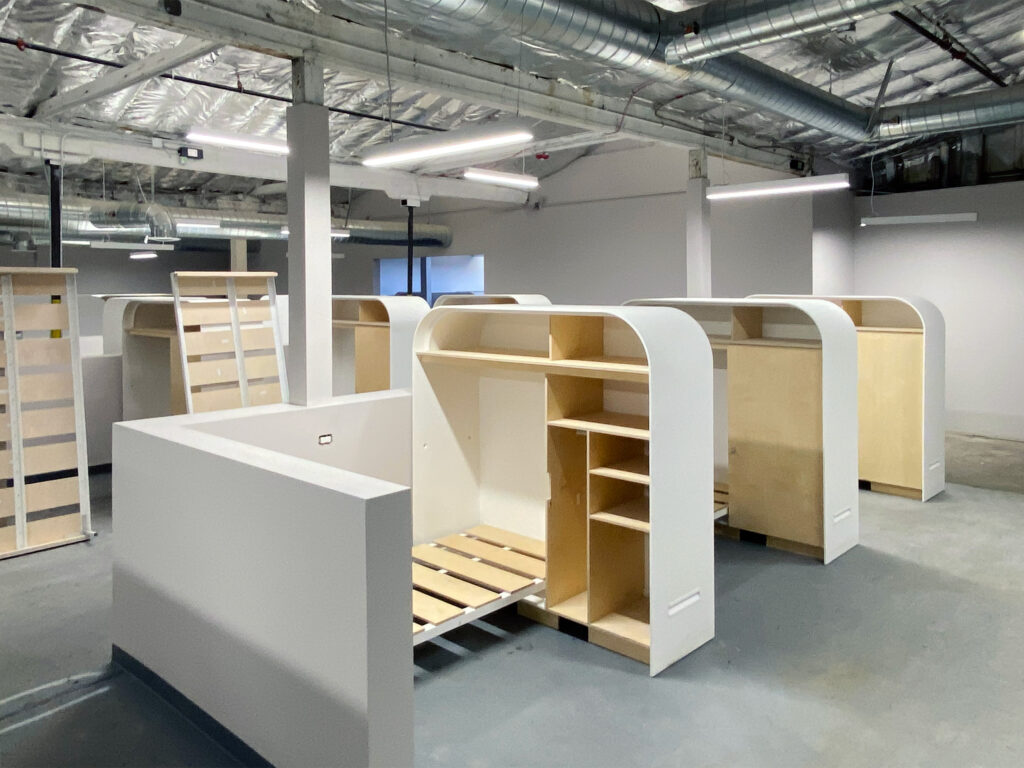
Over 600 Dome units have been installed in cities across the country including Los Angeles, Denver, and Boston.
